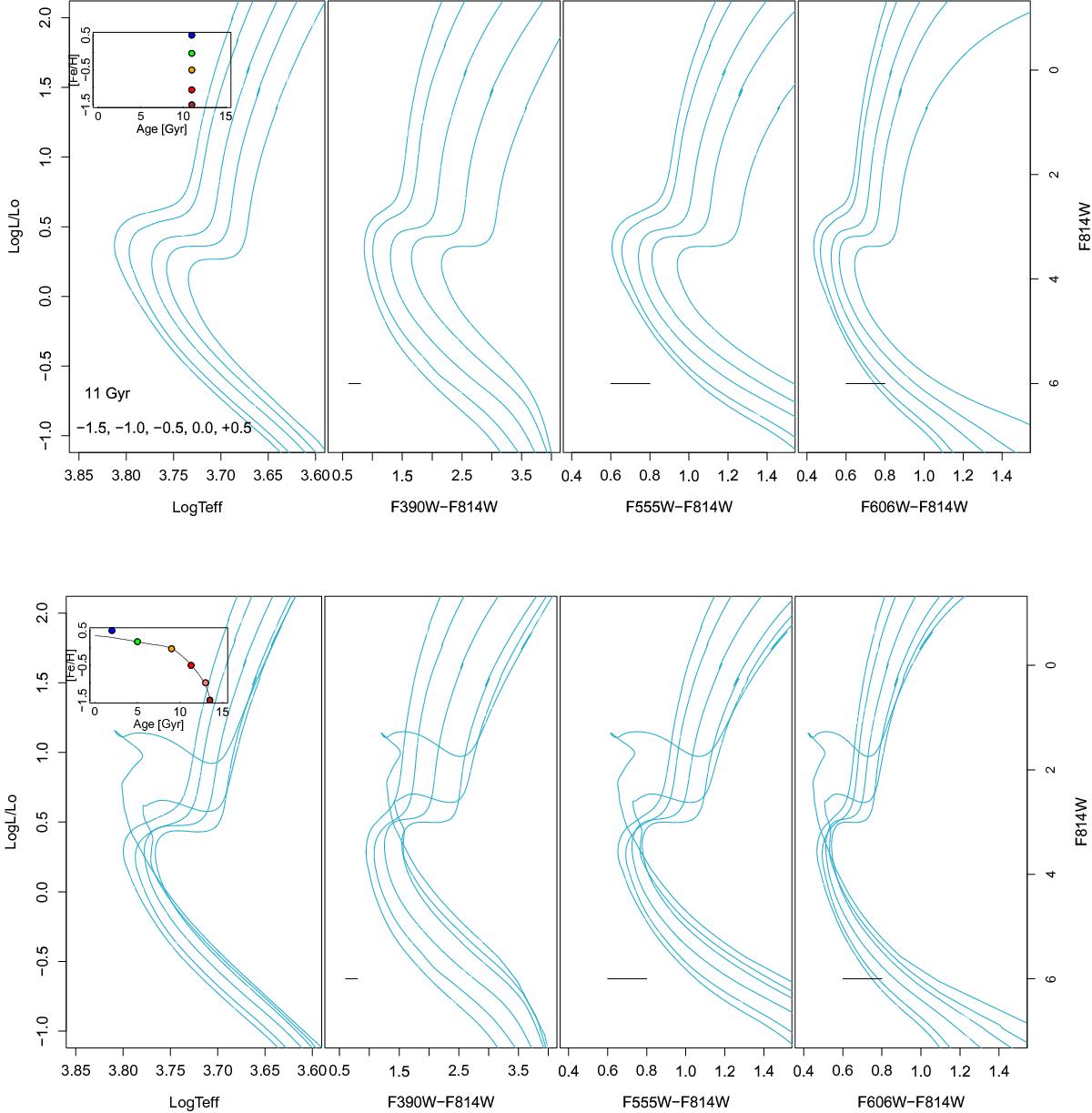Fig. 7

Isochrones from Dartmouth at age 11 Gyr and metallicities ranging from −1.5 to +0.5 dex (top) and along the age-metallicity relation of Fig. 3 (bottom), in the theoretical CMD in different WFC3 colors. The horizontal short segment in each CMD is 0.2 mag long, to be compared with the width of the turn-off in each color band. The color separation at turn-off between the most metal-rich and metal-poor isochrones is 0.21 mag (top) and 0.074 mag (bottom) in the F606W−F814W, similarly to Figs. 5 and 3. The color separation at the turn-off is 0.333 and 0.124 mag in the F555W−F814W bands. Alpha abundances of the isochrones are the same as those used for the isochrones of Figs. 5 and 3.
Current usage metrics show cumulative count of Article Views (full-text article views including HTML views, PDF and ePub downloads, according to the available data) and Abstracts Views on Vision4Press platform.
Data correspond to usage on the plateform after 2015. The current usage metrics is available 48-96 hours after online publication and is updated daily on week days.
Initial download of the metrics may take a while.


